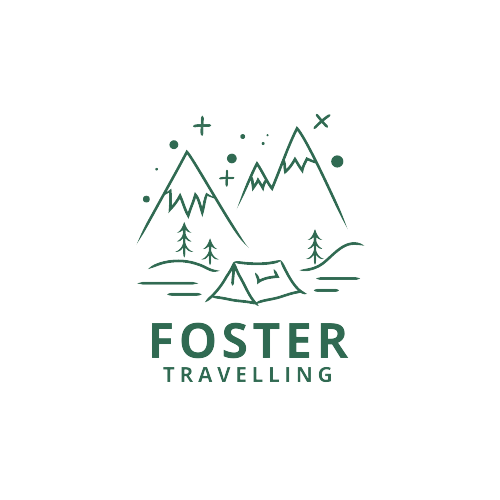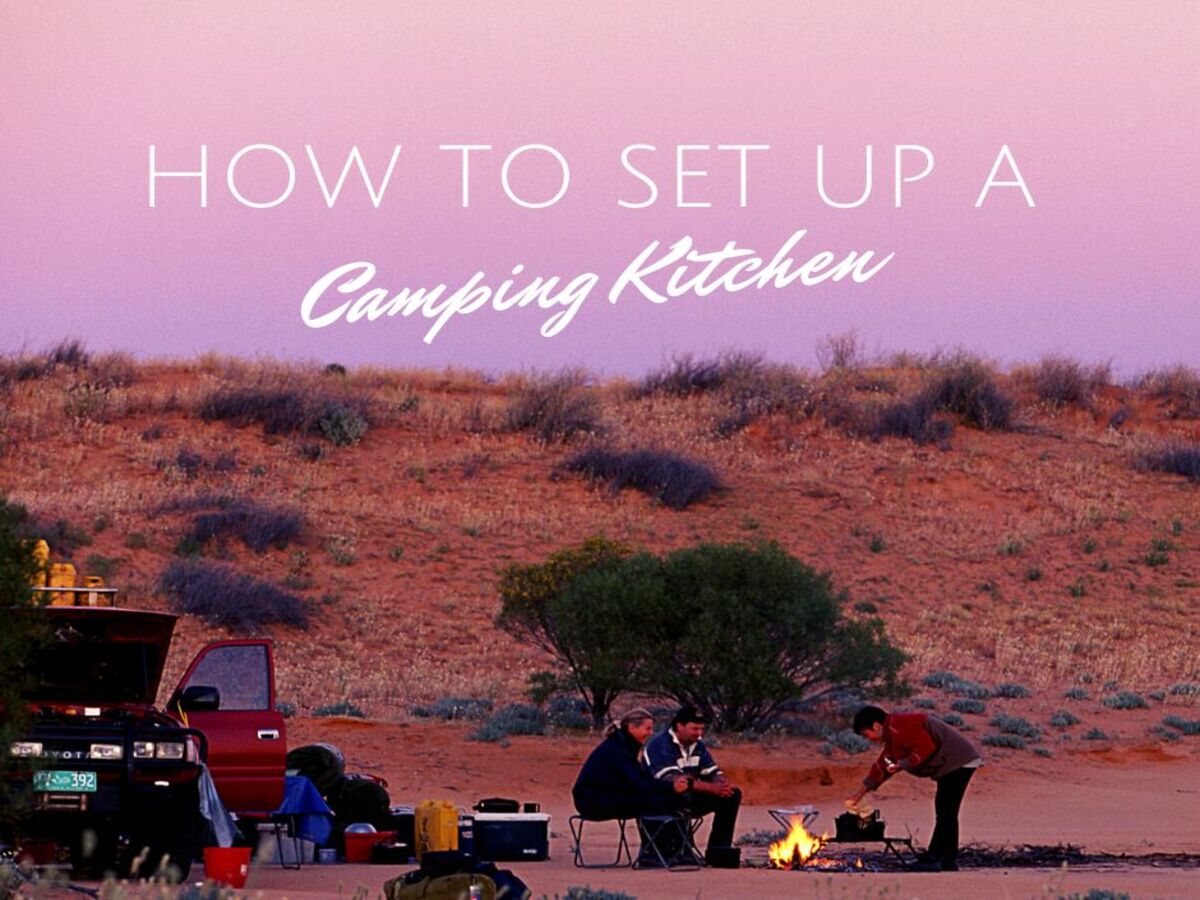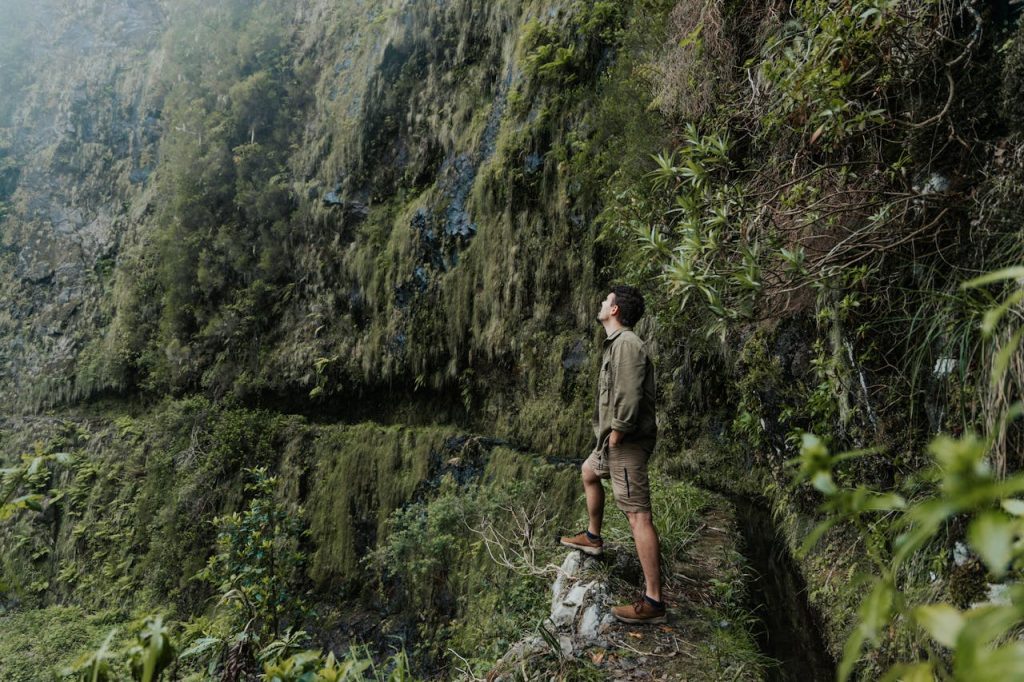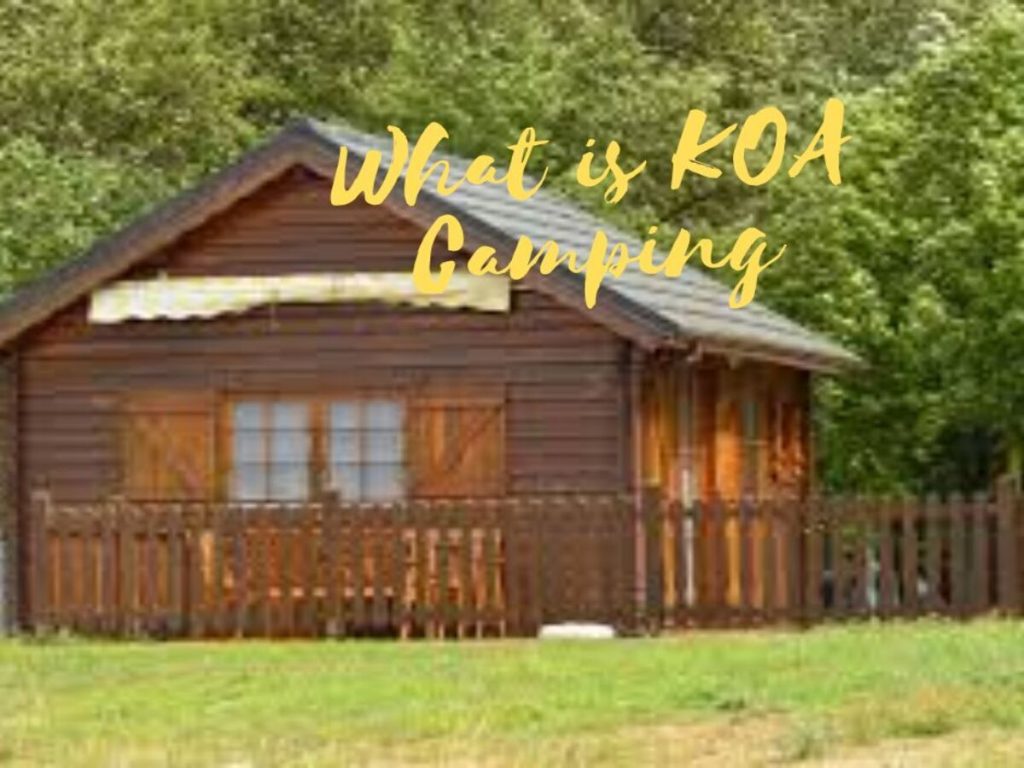Camping can be a fun and rewarding experience, but it’s important to be prepared to make the most of your trip. One essential aspect of camping is the kitchen – having a functional and organized space to prepare meals can make all the difference in your journey. This article will cover how to set up a camping kitchen, its importance, planning and preparing for it, and some tricks and tips for making the most of your campsite cooking setup.
A camping kitchen is an essential part of any camping trip. It’s not just about having a space to cook and eat – it’s about having a functional and organized space that allows you to save time and money and enjoy the convenience of having all your cooking and dining supplies in one place. Without a good camping kitchen setup, you’ll spend more time hunting for equipment and supplies and less time enjoying the great outdoors.
Benefits of Tent Camping Kitchen Set up
Table of Contents
Toggle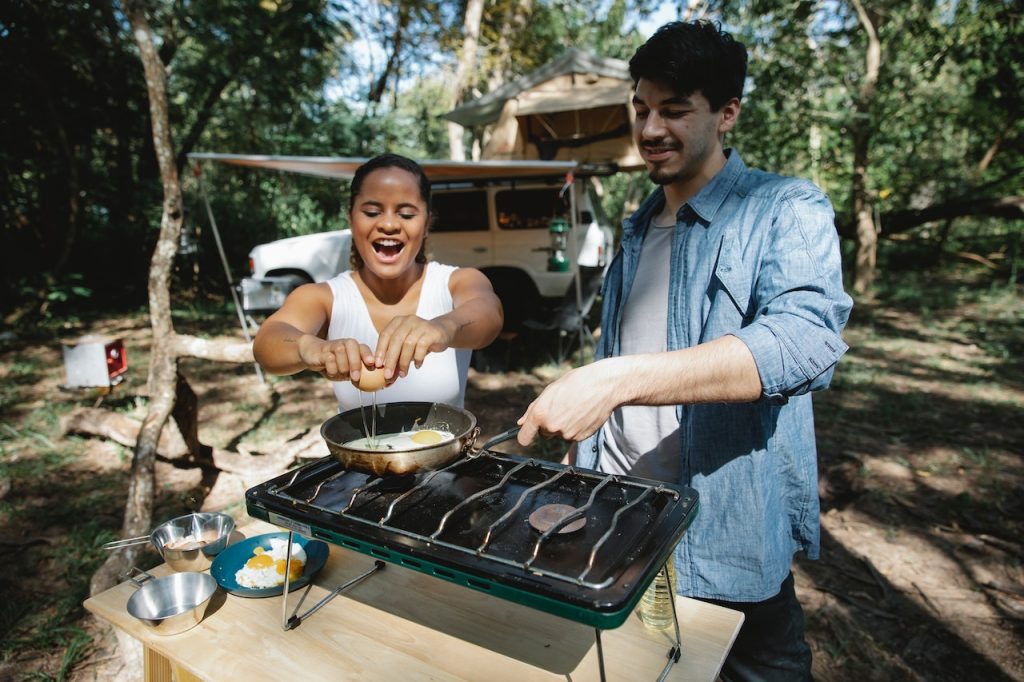
There are a few key benefits to setting up a camping kitchen:
Saving time and money:
With a well-organized camping kitchen, you can prepare meals quickly and efficiently, saving time for other activities. You’ll also save money by being able to cook your meals rather than eating out or buying pre-packaged foods.
Convenience:
A camping kitchen allows you to have all your cooking and dining supplies in one place, making it convenient to find what you need and reducing the risk of forgetting something important.
Comfort:
A comfortable and functional camping kitchen can make your trip more enjoyable by providing a welcoming space to prepare and eat meals.
Planning and Preparation
Before heading out on your camping trip, planning and preparing for your camping kitchen is essential. Here are a few things to consider:
Determine the size of your group and the length of your trip:
This will help you determine how much equipment and supplies you need and how much space you’ll need for your camping kitchen.
Make a list of necessary equipment and supplies:
Depending on your cooking needs and preferences, you may need a stove, fuel, pots and pans, utensils, dishes, and more. Make a list of everything you’ll need to bring, and check it twice to ensure you remember everything necessary.
Consider the space and resources available at your campsite:
Keep in mind the layout and size of your camp and where you’ll be able to set up your camping kitchen. You’ll also want to consider the availability of resources such as water and electricity, as these can impact your cooking options.
Choose lightweight and compact equipment:
When camping, it’s essential to keep the weight and size of your equipment to a minimum. Look for lightweight, compact cooking gear occupying only a little space in your car or pack.
Setting Up Camping Kitchen
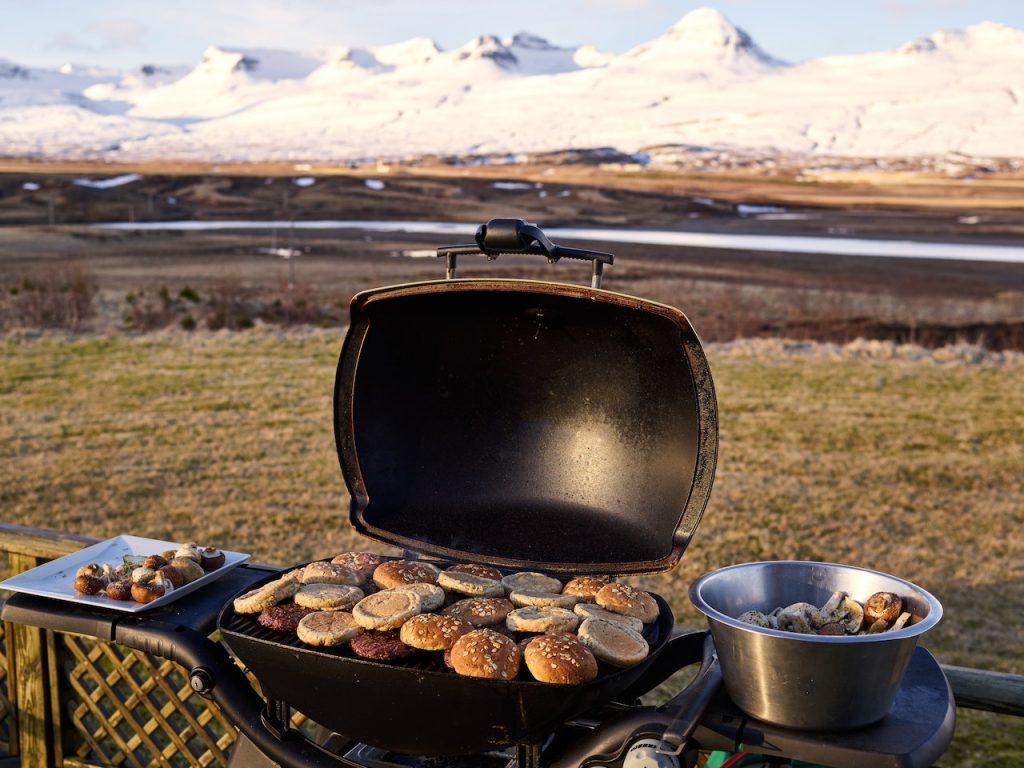
Once you arrive at your campsite, it’s time to set up your camping kitchen. Here’s how to do it:
Choose a flat, stable surface for your camping kitchen:
Look for a flat, durable surface close to your campsite and away from hazards such as overhanging branches or low-hanging power lines. Set your kitchen on a picnic table or use a portable kitchen stand.
Assemble your stove and fuel according to the manufacturer’s instructions:
Follow the instructions provided with your stove to set it up safely and efficiently. Use the appropriate fuel for your stove and store it safely and securely.
Set up your cooking area with a table or portable kitchen stand:
Use a table or mobile kitchen stand to create a dedicated cooking area. This will provide a stable surface for preparing and cooking food and help to keep your kitchen organized.
Organize your supplies and equipment in a way that makes sense for your cooking needs:
Think about how you’ll use your kitchen and arrange your supplies and equipment accordingly. For example, keep your pots and pans near the stove and your utensils and dishes within easy reach.
Portable Outdoor Folding Table
Pros:
- Portable cook station with ample storage space for camping equipment.
- Durable powder-coated steel frame with aluminum countertop and four fold-out side tables.
- The heat-resistant countertop can hold up to 48 lbs., which is ideal for camp stove placement.
- The lower rack provides additional storage space for camping essentials.
Cons:
- Counter and lower rack have weight limits that may not be suitable for heavier equipment.
- The folding design may be more challenging to set up and take down compared to fixed camping tables.
Coleman Camp Stove
Pros:
- Portable and easy to carry around to different outdoors.
- Two wind guards help protect burners from wind, making cooking easier outdoors.
- Improved knob rotation allows precise temperature control, making cooking food at the desired temperature easier.
- With 22,000 total BTUs of cooking power, it is a powerful stove that can quickly and efficiently cook food.
Cons:
- Using the Coleman Camp Stove indoors is not recommended, as it can produce carbon monoxide.
- The stove requires propane cylinders, which must be purchased separately and may need to be replaced frequently depending on usage, adding to the stove’s overall cost.
Tips and Tricks for Camping Kitchen
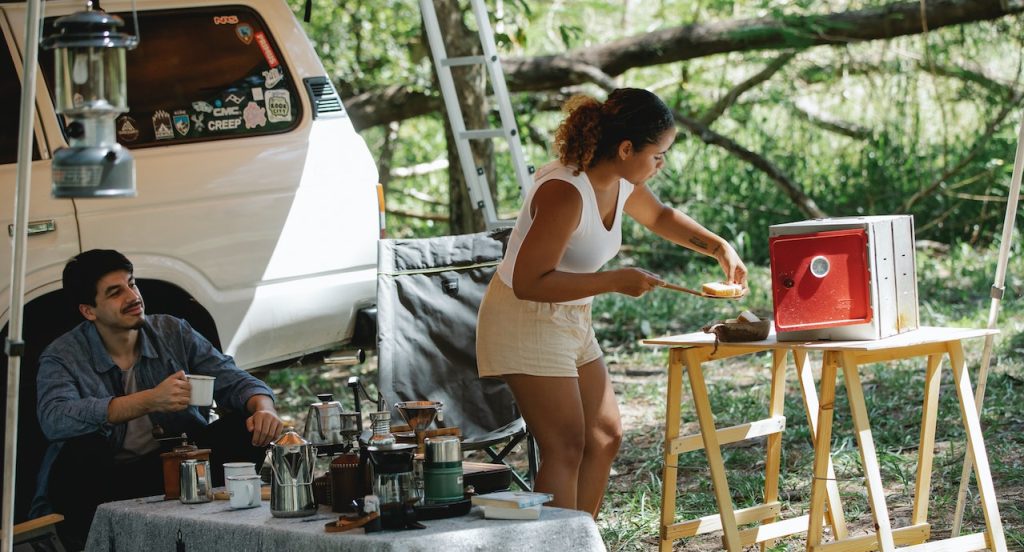
Here are a few additional tips and tricks for making the most of your camping kitchen:
Bring a portable sink or a container for washing dishes:
A portable sink or large container can be handy for washing dishes and cleaning up after meals. Just bring enough water and a bar of biodegradable soap to last your trip.
Joseph Wash and Drain Dish Tub
Pros:
- Convenient plug and strainer design
- Lightweight and portable
- Large 8.9-liter capacity
- Easy to clean
Cons:
- Countertop mount limits versatility
- Hand wash only; not dishwasher safe.
Use a cooler to store perishable items:
A cooler is a great way to keep perishable items such as dairy and meat products fresh. Just keep it in a shady spot and restock the ice as needed.
Use dry bags or waterproof containers to protect your supplies:
If you’re camping in an area with the possibility of rain, it’s a good idea to protect your supplies with dry bags or waterproof containers. This will help to keep your kitchen dry and functional in wet conditions.
Consider using a tarp to create a makeshift kitchen shelter:
If camping without natural cover, set up a tarp to build a makeshift kitchen shelter. This will provide some protection from the elements and help to keep your kitchen dry and comfortable.
Kitchen Camping Safety Rules
- Always use camping stoves and equipment in well-ventilated areas to prevent carbon monoxide poisoning.
- Keep a fire extinguisher within easy reach in case of emergencies.
- Wash your hands both before and after handling food to prevent contamination.
- Store food in airtight containers or coolers to prevent spoilage and attract wildlife.
- Cook food to the appropriate temperature to prevent foodborne illness.
- Use cutting boards and utensils specifically for raw meat to prevent cross-contamination.
- Ensure children and pets are away from cooking areas to prevent accidents.
- Use proper utensils and handles when cooking to prevent burns and injuries.
- Keep a clean campsite and dispose of food waste properly to prevent attracting animals.
- Be mindful of the weather and take precautions, such as securing equipment and shelter during inclement conditions.
Conclusion
Setting up a camping kitchen may seem like a lot of effort, but it’s worth it for its convenience, comfort, and cost-saving benefits. Planning and preparing in advance and being strategic about your setup can create a functional and organized space to make your camping trip more enjoyable. So next time you head out on a camping trip, consider setting up a camping kitchen – you won’t regret it!
FAQs
Can you use Coleman Camp Stove indoors?
Using the Coleman Camp Stove indoors is not recommended, as it can produce carbon monoxide, a colorless and odorless gas that can be extremely dangerous if inhaled in high concentrations. The stove is designed for outdoor use, such as camping, picnics, and roadside cooking. It is essential always to follow the manufacturer’s instructions and use camping equipment in a well-ventilated area or outside to prevent the risk of carbon monoxide poisoning.
How far should you cook from your campsite?
It’s generally recommended to cook at least 50 feet away from your campsite and any dry vegetation. This helps to prevent accidental fires and reduce the risk of attracting wildlife. If you’re using a portable stove, you should also follow the manufacturer’s guidelines for safe use, which may include specific distance requirements. Additionally, following local regulations or policies for cooking at your campsite is essential, as these may vary depending on your area.
How much food is required for a week of camping?
The amount of food you’ll need for a week of camping will depend on several factors, including the size of your group, your appetite, and the type of activities you’ll be doing. Here are a few guidelines to help you plan your food supplies:
- Plan for at least three meals per day for each group member. If you are doing a lot of strenuous activities, plan for additional snacks or energy-boosting foods.
- Consider the type of food you’ll be bringing. Non-perishable items such as granola bars, nuts, and dried fruit are good snack options, as they don’t require refrigeration. For meals, consider bringing items that are easy to prepare, such as pre-packaged rice or pasta meals, canned goods, or dehydrated foods.
- Remember breakfast! Plan to have various breakfast items, such as oatmeal, eggs, and breakfast bars.
- Pack more than you think you’ll need. Extra food is better than running out, especially in a remote area.
Packaging about one pound of food per person daily is a good idea. This will give you plenty of camping supplies for a week, but depending on your specific needs and preferences, you may want to adjust this amount.
What food does not attract bears?
Bears have a sharp sense of smell and are attracted to various foods, including natural and manufactured products. However, there are some measures you can take to reduce the risk of attracting bears to your campsite:
- Avoid bringing foods with a strong smell, such as bacon, fish, and certain fruits.
- Refrain from storing food in your tent or other sleeping areas.
- Keep your campsite clean and free of food scraps and garbage.
- Store your food and trash in bear-proof containers or bags to keep bears out.
- If you’re camping in an area with bears, follow any local guidelines or regulations for food storage.
By following these precautions, you can help to reduce the risk of attracting bears to your campsite. However, it’s important to remember that bears are wild animals and can be dangerous, so always be cautious and aware of your surroundings when camping in bear country.
Happy Cooking out!
